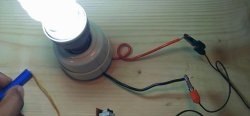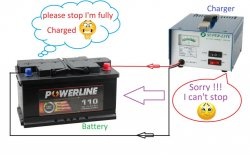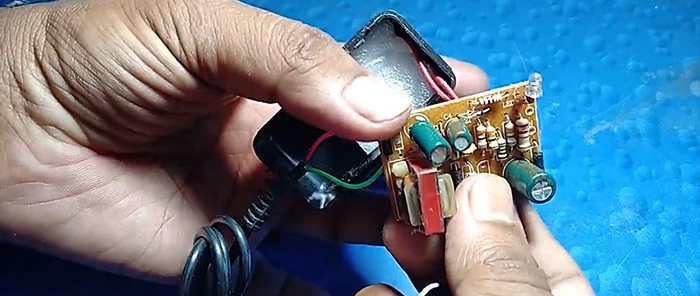
A classic switching power supply circuit appeared before me.
Manufacturing a converter from 1.5 V to 220 V
So, I removed the transformer from the charger board.

It is also classic and has 3 windings: high-voltage, low-voltage and excitation winding. Determine which is which using multimeter, measuring the resistance of each will not be difficult.
Next you will need a D882F transistor or any other “n-p-n” structure.

You can also find a resistor on the board with a resistance of 10-100 Ohms.
Converter circuit
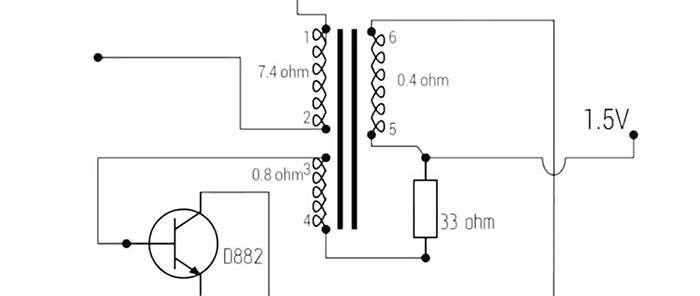
Again: this is a classic blocking oscillator circuit using a single transistor. The circuit operates at the resonant frequency of the transformer to increase efficiency, which is approximately 25 kHz.
Assembly
Everything is assembled simply and quickly using hinged installation.
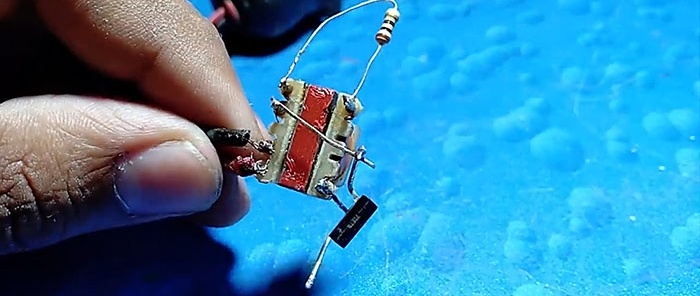
Next, connect the power from one AA battery. And the load, which is a 3 W LED lamp.


If the converter does not work, then change the contacts of any winding in the transistor circuit, everything should work. To increase the brightness of the lamp, you can power the converter from two AA batteries.
Without load, the transformer produces voltage up to 600 V, but, naturally, under load it drops.




